By Casey Markoe, Guest Columnist
A Trading Floor is a unique environment designed to house and support the trading operations of financial firms. The staff in these spaces typically includes traders, research, and support personnel. As there is an extensive amount of technology at each position (multiple monitors, computers, and the associated power & data cabling), trading desks are specifically designed to support and manage this physical infrastructure.
There are many considerations when deciding on a new trading desk. These include the number of people to be supported, the amount of space allocated to each user (position size), the technology to be supported by the desk, and the design of the desk.
Personnel To Be Supported
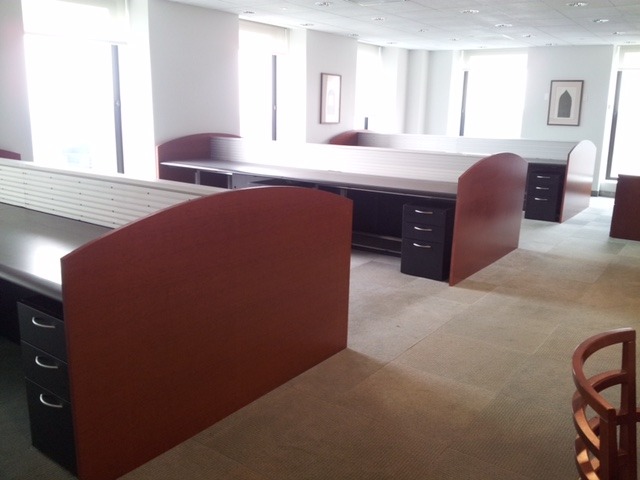 The layout must be designed to maximize the number of positions that can be comfortably installed in the space. Trading desks in a back-to-back configuration are typically a more efficient use of space than single sided desks. When providing a 60” wide x 36” deep desk, each position will require approximately 30 square feet of space including the aisle.
The layout must be designed to maximize the number of positions that can be comfortably installed in the space. Trading desks in a back-to-back configuration are typically a more efficient use of space than single sided desks. When providing a 60” wide x 36” deep desk, each position will require approximately 30 square feet of space including the aisle.
It is also important to provide positions for planned future growth. Taking into account furniture installation, electrician, and IT expenses, installing all the desks at one time is less expensive than installing fewer desks initially and adding more at a later date.
Space per User
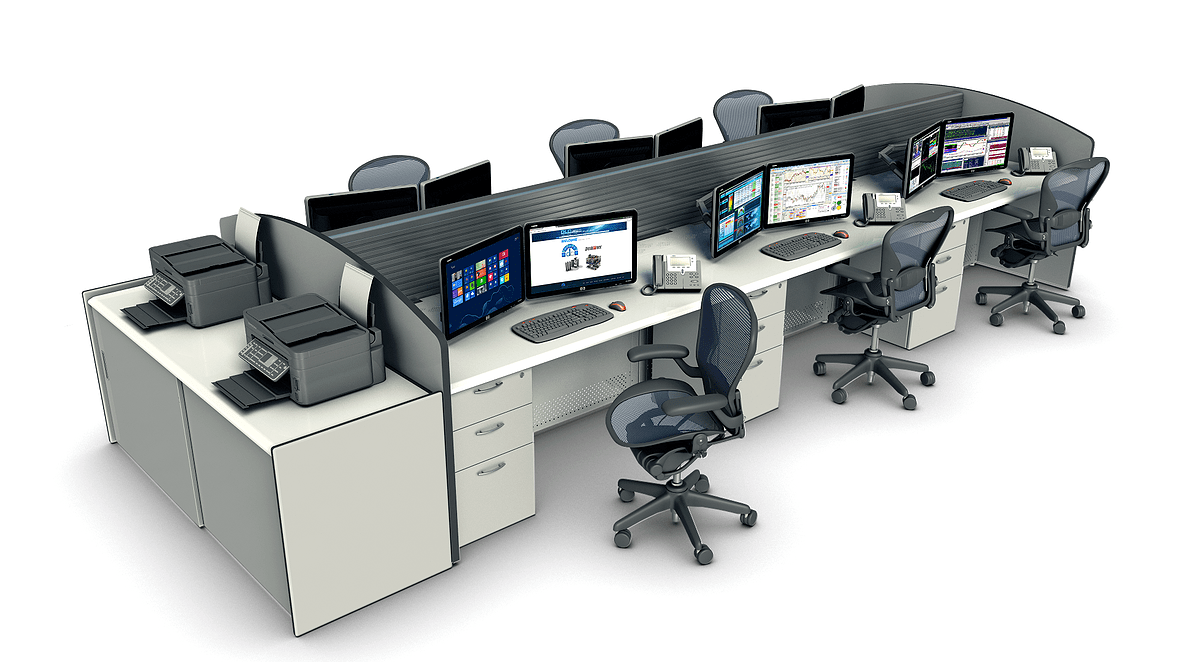 Most trading floors are designed with a desk size of 60” wide x 36” deep. In cases where the size and number of monitors to be supported is large, the desk size may increase to 72” wide. This allows for larger monitor arrays to be supported while enabling the user to comfortably view the screens. This is typical in heavy trading environments.
Most trading floors are designed with a desk size of 60” wide x 36” deep. In cases where the size and number of monitors to be supported is large, the desk size may increase to 72” wide. This allows for larger monitor arrays to be supported while enabling the user to comfortably view the screens. This is typical in heavy trading environments.
Conversely, in brokerage operations where the users are mainly conducting business on the phone, the desk size is commonly 48” wide by either 36” or 30” deep.
Technology
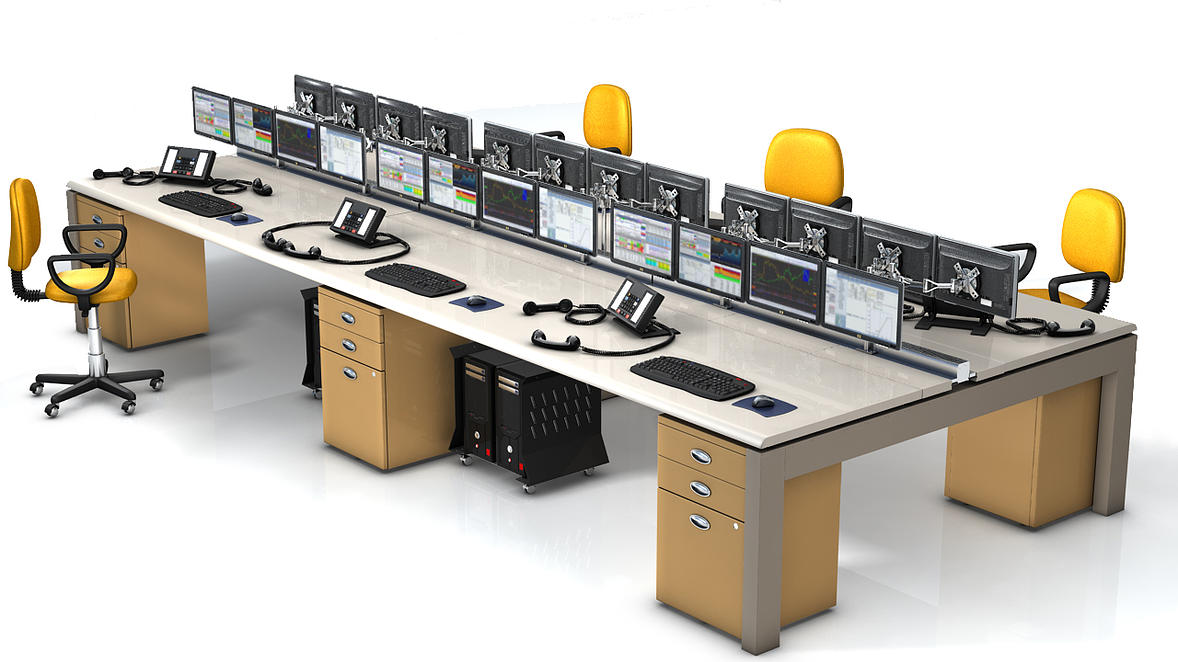 Recently, trading floors have been furnished with either conventional trading desks or robust benching systems. In environments where the technology to be supported is heavy (multiple monitors, computers, etc.) a trading desk is recommended. Trading desks are able to support large monitor arrays with either a vertical slatwall or horizontal rail. These desks also have an integrated cable tray running down the center spline of the desk just below the worksurface to cleanly manage electric and data cabling. Both the slatwall/horizontal rail and cable tray easily allow for Day 2 changes.
Recently, trading floors have been furnished with either conventional trading desks or robust benching systems. In environments where the technology to be supported is heavy (multiple monitors, computers, etc.) a trading desk is recommended. Trading desks are able to support large monitor arrays with either a vertical slatwall or horizontal rail. These desks also have an integrated cable tray running down the center spline of the desk just below the worksurface to cleanly manage electric and data cabling. Both the slatwall/horizontal rail and cable tray easily allow for Day 2 changes.
If there are only 1 -2 monitors and a small form factor computer or thin-client, a sturdy bench might be sufficient. Most benching systems have an integrated cable tray beneath the worksurface similar to a trading desk.
Desk Design
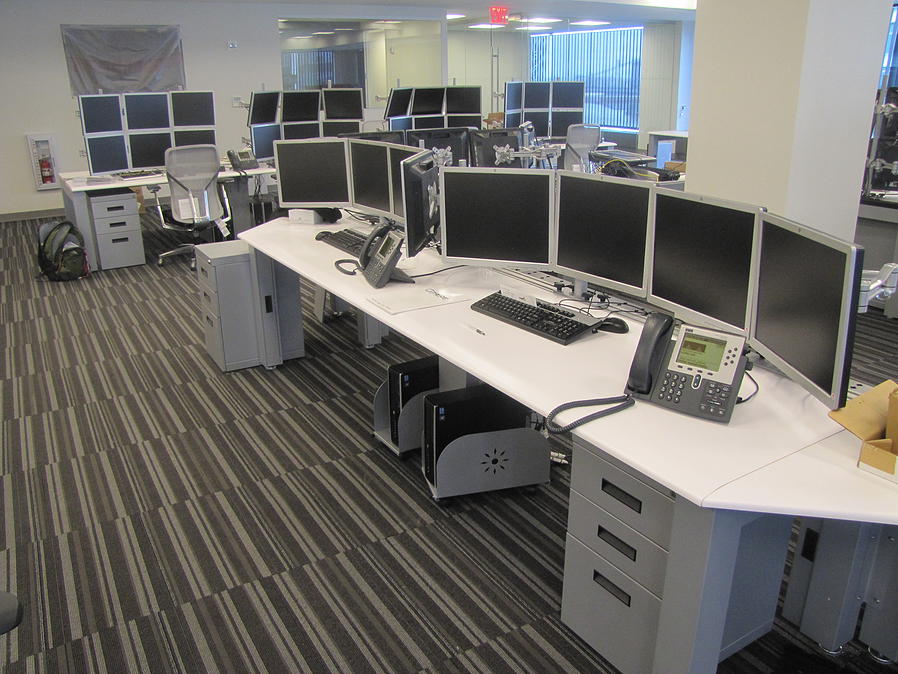 A traditional trading desk has doors beneath the worksurface to secure the computer void. Many trading desks are now available with a computer cabinet located on one side of the position leaving the center knee well space open. This design dramatically increases the user’s legroom. This cabinet can be sized for the computer to be stored and is usually locking.
A traditional trading desk has doors beneath the worksurface to secure the computer void. Many trading desks are now available with a computer cabinet located on one side of the position leaving the center knee well space open. This design dramatically increases the user’s legroom. This cabinet can be sized for the computer to be stored and is usually locking.
Many trading floors are designed with height adjustable desks. This solution is available in a trading desk or bench. The cost is higher than a fixed worksurface, however, the benefits for the user over the life of the desk can outweigh the initial cost.
It is important to include the above factors when deciding how the trading desk and trading floor will be designed.
Casey Markoe is VP, Sales for New York Based Saraval Industries, a technical furniture and control room solutions provider. You can contact Casey at cm@saravalindustries.com, Tel: 917-485-1019 www.saravalindustries.com
The views expressed in this blog are those of Richard Neuman and do not necessarily represent the views of his employer.
Discover more from Helping NYC & Long Island Commercial Tenants, Owners, and Developers
Subscribe to get the latest posts sent to your email.

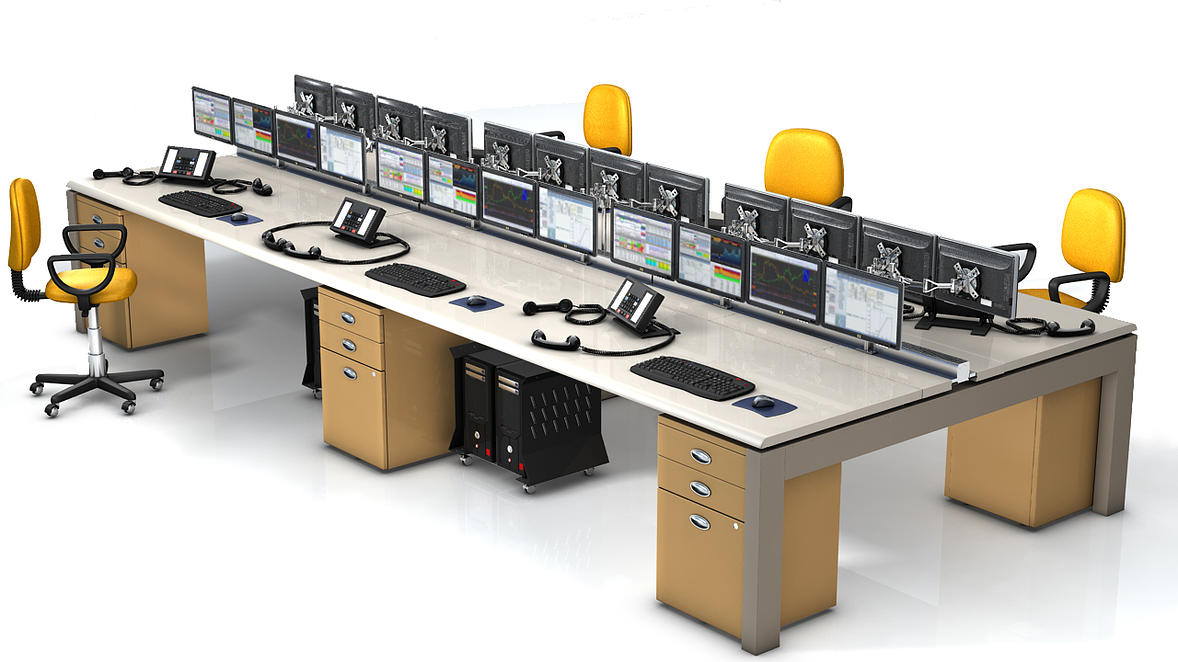



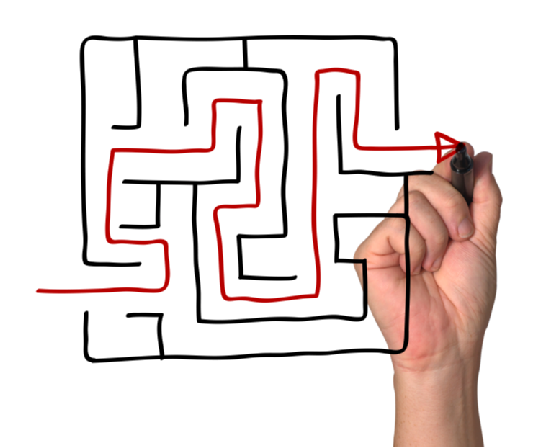
Great article. Hits all the pertinent points regarding trends.
Thanks for taking the time to enlighten all of us